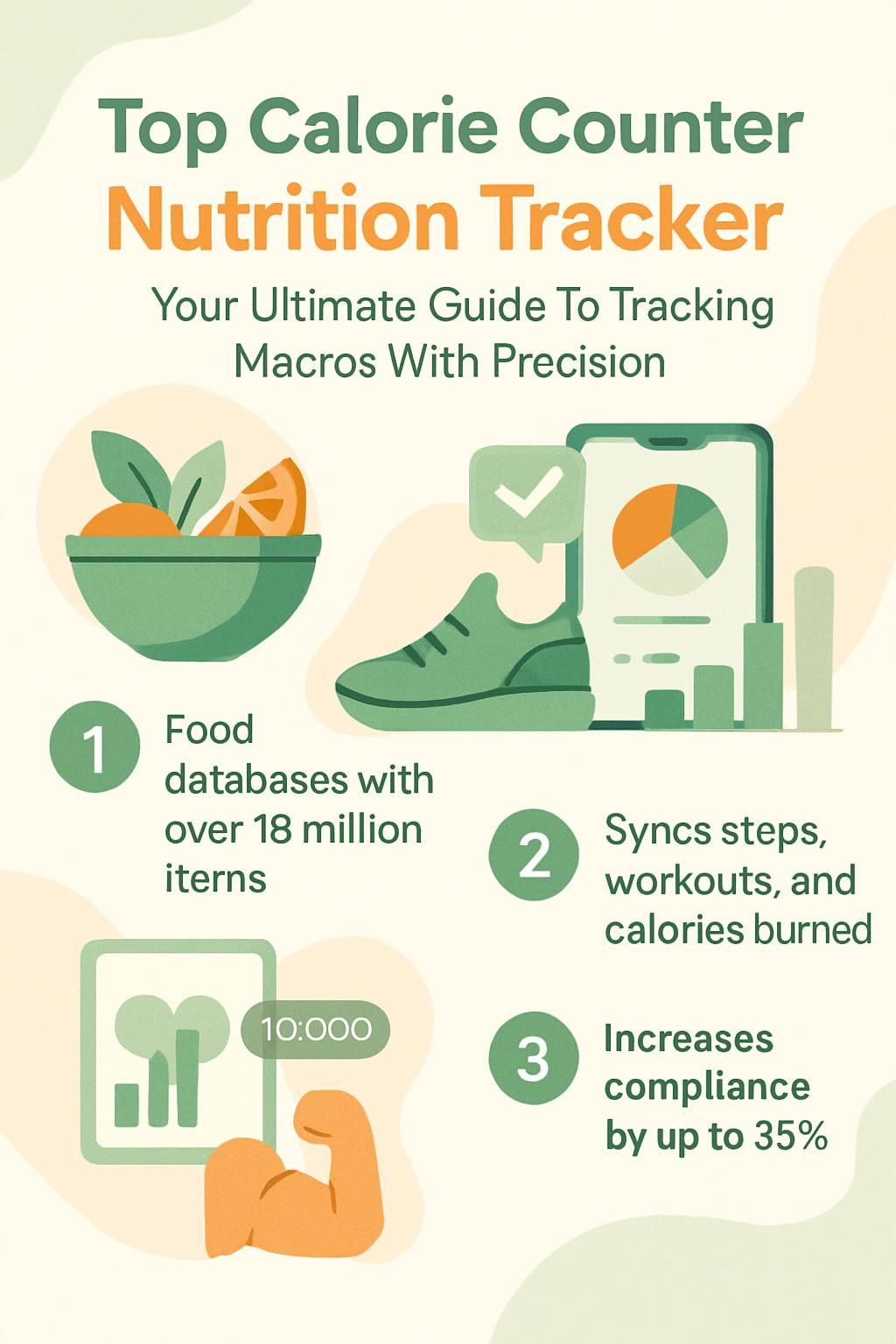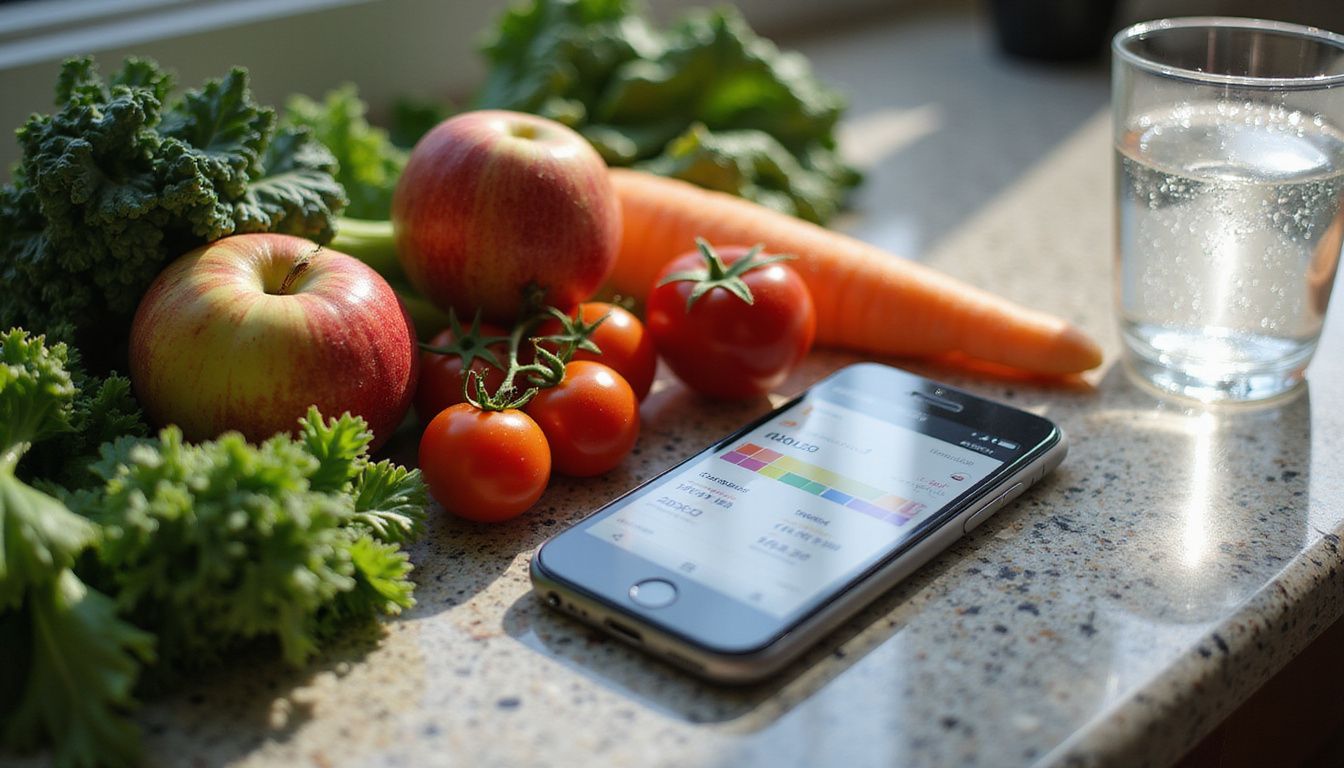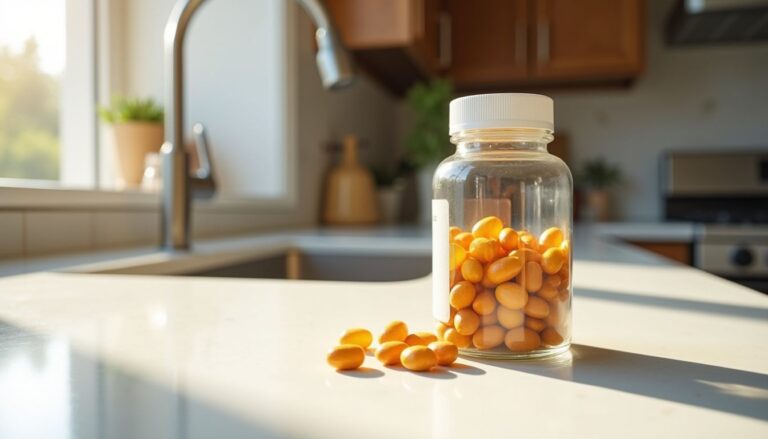Top Calorie Counter Nutrition Tracker: Your Ultimate Guide To Tracking Macros With Precision
Our Nutrition Assistant AI Suite will transform your body. You will lose fat, get toned, and build muscle. Gain confidence and optimal health.
Counting calories and tracking macros can feel confusing at first. A strong calorie counter makes nutrition tracking simple, clear, and accurate. Popular tools like MyFitnessPal list millions of foods, which helps you log meals without guessing.
This guide shows you how to choose a tracker, set goals, and sync with devices like Fitbit, Garmin, or Apple Watch. You will learn practical steps you can use today.
Key Takeaways
- Top apps such as MyFitnessPal and Cronometer include huge food databases, barcode scanning, and verified nutrition data for accurate macro tracking.
- Syncing with wearables like Fitbit and Garmin brings steps, workouts, sleep, hydration, and calories burned into one dashboard for a full view of health.
- Premium tools may include Basal Metabolic Rate, or BMR, calculators using the Mifflin St. Jeor equation, Body Mass Index, or BMI, assessments, meal plans, fasting logs, and detailed micronutrient tracking.
- Daily logging with reminders boosts consistency and improves insights based on your age, activity level, and health goals.
- Many health professionals recommend Cronometer for strong privacy controls and evidence-based analysis that helps prevent nutrient gaps while supporting weight goals.

Why Use a Calorie Counter Nutrition Tracker?

A calorie counter nutrition tracker helps you monitor your food choices and daily intake with care. You can use verified nutrition data to support goals like weight loss, muscle gain, or balanced eating.
How Can You Track Macros and Calories Accurately?
Accurate tracking helps you reach goals faster with fewer setbacks. Modern apps remove guesswork with barcode scanners, verified entries, and clear targets.
- Log every food and drink using a tracker like Cronometer or MyFitnessPal. Include snacks and condiments.
- Scan barcodes on packaged foods so the app can pull serving size, protein, carbs, fat, vitamins, and minerals from the label.
- Pick verified entries whenever possible. Cronometer lists over 1 million checked foods, which improves accuracy.
- Set daily calorie targets with built-in calculators that use your age, height, weight, and goal. Many use the Mifflin St. Jeor equation with about 10 percent accuracy for BMR.
- Choose a macro tracker that updates needs as your weight changes. Cronometer adjusts targets when you log new weights.
- Track micronutrients, the vitamins and minerals your body needs. Cronometer covers up to 84 nutrients for a complete view.
- Sync your wearable, such as Fitbit or Garmin, so exercise calories flow into your totals automatically.
- Log right after eating. Simple reminders can help you capture snacks and quick bites on busy days.
- Review daily summaries so you can adjust choices to hit macro goals with more precision.
- Track water intake in the same diary. Hydration supports energy, digestion, and overall performance.
These steps keep macro tracking precise and make calorie counting easier through tools that support healthy, data-driven changes.
What Are the Benefits of Understanding Your Diet and Health?
Knowing what you eat gives you control. Trackers like Cronometer, often used by dietitians and doctors, compare your intake with trusted standards to show strengths and gaps.
You can match calories, protein, and key vitamins to guidance from tools like the MyPlate Plan Calculator at myplate.gov. Personalized insights highlight nutrient gaps that can affect energy or blood sugar level. A free app once showed me low vitamin D, which I fixed by using fortified foods.
Seeing patterns links meals with signs and symptoms such as fatigue or pain. Over time, small changes add up. Large food databases make logging fast and precise. Privacy settings protect your data while integrations with Apple Inc., Samsung devices, Fitbit, and Garmin bring steps, sleep, BMI, hydration, and more into one view.
A calorie counter nutrition tracker showed me exactly where hidden sugars affected my progress,said Jamie W., who used personal nutrition guidance to help manage diabetes.
Once you understand your habits, you can build routines that last.
How Do Nutrition Trackers Help Build Long-Term Healthy Eating Habits?
Nutrition trackers turn healthy eating into daily steps you can stick with. The Start Simple with MyPlate
app uses small actions that build over time.
The Shop Simple feature offers budget-friendly choices, which makes healthier options easier to afford. Tip sheets and short videos support people of all ages.
Tools like MyFitnessPal use a three-step approach: track meals each day, review weekly plans, then make better choices with feedback. Cronometer lets you save custom foods and recipes, which speeds up logging and builds consistency.
When I logged calories every day, I noticed trends within weeks. I made small changes, then those changes became habits. Advice from a nutrition coach or health professional can guide steady progress.
Key Features of Leading Calorie Counter Nutrition Trackers
Leading trackers combine accurate nutrition information with large databases. These features make daily logging faster and help you choose meals that fit your plan.
How Do Extensive and Accurate Food Databases Improve Tracking?
A big, high-quality database helps you track with confidence. MyFitnessPal lists over 20 million foods, including local items and restaurant meals. You can also log custom recipes.
Cronometer includes more than 1 million verified entries for reliable calorie and nutrient data. I once entered a homemade keto recipe in both apps and found every ingredient without guesswork.
Accurate data reduces logging errors and improves micronutrient tracking. MyFitnessPal has earned more than 3.5 million five-star ratings from users who value precise tracking.
Most apps include barcode scanning for instant nutrition facts. That speed keeps you consistent, which matters most for progress.
What Are the Advantages of Barcode Scanning for Food Logging?
Barcode scanning makes logging quick and exact. Cronometer’s scanner identifies most packaged foods, so you can add items in seconds.
You do not need to type product names or nutrition values. MyFitnessPal includes scanning in its premium plan, which taps into one of the largest databases.
Users like the coverage across brands and how scanning reduces manual entry. In my routine, scanning cut errors, especially on busy days when I wanted solid data.
Strong database quality combined with scanning is a proven recipe for better macro tracking.
How Does Integration with Wearables and Apps Enhance Tracking?
Syncing a tracker with wearables raises accuracy and saves time. MyFitnessPal connects to over 35 devices and apps, including Fitbit, Apple Health, Strava, Garmin, Google Fit, and Samsung Health.
You get steps, exercise calories, sleep data, and other biometrics in one place. Cronometer also syncs with popular devices and presents sleep and workout intensity for richer insights.
Automation cuts manual input. Linking my Fitbit made activity tracking effortless during my ketogenic diet plan. Seeing nutrition and movement together gave me better control.
This integration builds a full picture of your day, which helps you adjust goals with more confidence.
How Do Custom Nutrition Insights Provide Personalized Guidance?
Custom insights turn your data into advice you can use. Cronometer analyzes logged foods, activity, and personal stats to suggest clear changes.
MyFitnessPal sends weekly meal plans shaped by your calorie or macro goals. The MyPlate Plan Calculator tailors guidance by life stage and needs, including pregnancy or lactation.
These tools help you choose foods that match your targets. Cronometer Gold adds deeper micronutrient analysis and updates recommendations as you progress. During last year’s diet, toggling macro targets kept me on track for both weight loss and muscle building.
Popular Calorie Counter Nutrition Trackers Reviewed
Many trackers offer unique tools for tracking macros, calories, and biometrics. Explore a few options to see which one fits your routine.
What Does MyFitnessPal Offer for Nutrition Tracking?
MyFitnessPal supports precise tracking of calories, macros, and key nutrients. Its database has over 20 million foods, which makes it easy to log local and restaurant items or scan packages.
You can set custom macro goals based on your age, weight, and activity level. The app integrates with more than 35 services, including Apple Health, Fitbit, Garmin, and Samsung Health. You can also track intermittent fasting and water intake.
More than 200 million users rely on the platform, and many reach weight and health goals with its tools. Premium adds advanced analysis, meal reports, and a free one-month trial for new users. The subscription renews unless canceled 24 hours before the period ends.
When I used MyFitnessPal during college athletics, fast scanning saved time. Clear reports made hitting macro targets much easier.
Why Choose Cronometer for Your Nutrition Needs?
Cronometer tracks 84 essential vitamins and minerals with detailed reports. Its database includes over 1 million verified foods for precise logging.
Barcode scanning covers most packaged items, which speeds up daily entries. The app updates energy needs when you log new weights. This keeps your plan current for weight loss or maintenance.
It syncs with popular wearables and supports tracking of biometrics. Many clinicians endorse Cronometer due to its extensive nutrition data and strong privacy features.
The free version is generous, and Cronometer Gold adds custom nutrient targets and deeper insights. Tracking with Cronometer helped me spot micronutrient gaps and improve my diet.
Below, compare features from other top trackers to find your fit.
What Features Make MyFoodDiary Stand Out?
MyFoodDiary is known for a user-friendly layout that makes logging simple. Its food database covers more than 18 million items, which supports fast, accurate entries.
You can track macros, micronutrients, and water intake. The BMR calculator sets calorie goals, and the BMI tool helps set realistic targets.
It syncs with more than 35 brands. I connected my Fitbit account in minutes, and my daily steps appeared automatically.
If you like both clean data and practical guidance, MyFoodDiary balances detailed logging with clear insights.
How Can Nutritionix Support Your Diet Tracking?
Nutritionix makes logging straightforward. The database includes over 20 million items, including fresh foods, packaged products, and many restaurant menus.
You can scan barcodes or add foods with a few taps. Clear charts show daily and weekly nutrition, including macros, micronutrients, and water.
A built-in BMR calculator personalizes calorie goals by age, weight, height, and activity. Millions have used Nutritionix to plan meals and track with precision.
How to Use Calorie Counter Nutrition Trackers Effectively
Using a calorie counter nutrition tracker can raise your accuracy and your confidence, which leads to better results.
Why Is Consistency Important in Meal Logging?
Regular logging helps you see patterns and fix them quickly. Apps like Cronometer can adjust energy needs when your data stays consistent.
People report steadier weight loss and better health when they log daily. Skipping days creates gaps and weakens your analysis.
Build a habit of recording what you eat. Complete records show where extra calories or missing nutrients come from in your routine.
How to Track Macronutrients, Micronutrients, and Hydration Thoroughly?
Strong habits start with consistent logging. Tracking macros, micronutrients, and water gives a complete picture of your intake.
- Use apps like Cronometer or MyFitnessPal to log every meal. These tools list carbs, protein, fat, vitamins, and minerals.
- Scan barcodes to capture exact serving sizes and calories for packaged foods.
- Save homemade recipes so you can reuse them. This speeds up logging for repeat meals.
- Check micronutrient targets in Cronometer against expert benchmarks from the Institute of Medicine.
- Log water intake daily. Hydration supports metabolism and helps keep macros balanced.
- Adjust portions to match what you actually ate, not just the label’s serving size.
- Use progress charts to review trends each week or month.
- Sync devices like Fitbit or Garmin so exercise calories adjust your totals automatically.
- Read personalized reports in Cronometer to see nutrients that may need attention.
- Use planning tools like the MyPlate Plan Calculator, which applies DRI and EER formulas for age-appropriate targets.
Following these steps gives you a full view of what you eat, drink, and need, so you can make smarter choices.
How Can You Monitor Physical Activity and Progress?
Linking activity with nutrition turns data into action. A few habits keep you on track.
- Use trackers that sync with wearables to record steps and workouts automatically.
- View step count and exercise stats on the home dashboard in MyFitnessPal.
- Log workouts manually or sync platforms such as Strava and Samsung Health for real-time updates.
- Connect Cronometer to track sleep quality, activity, and workout duration for deeper insights.
- Compare logged exercise with macro intake to see how movement changes nutrient needs.
- Set fitness goals in the app and review progress charts regularly.
- Include daily movement, like dog walks or housework, since it also burns calories.
- Check weekly or monthly summaries to spot links between activity and results.
- Turn on reminders so you do not miss logging activity.
- Use calorie burn estimates paired with macro tracking for a complete view of your day.
I used MyFitnessPal while training for my first 10K in 2023. Syncing a Garmin watch showed how more protein improved my endurance.
What Are the Advantages of Precise Macro Tracking?
Precise macro tracking shows how protein, carbs, and fat add up across your day. You get better control over calories and recover faster from workouts.
How Does Macro Tracking Support Weight Management?
Macro tracking breaks down your daily calories into protein, carbs, and fat. That clarity helps you stick to targets for weight loss or maintenance.
Apps often use the Mifflin St. Jeor equation to estimate calorie needs with about 10 percent accuracy. Cronometer can also adjust energy targets as your activity and weight change.
I used macro tracking after football season. Portion sizes started to make sense, and my progress stayed steady week after week.
How Can Tracking Macros Improve Fitness and Athletic Performance?
Tracking macros helps you match fuel to training needs. With MyFitnessPal connected to Garmin or Fitbit, you can see workouts next to calories and macros.
That view shows whether protein supports recovery or if carb intake should rise on hard days. Cronometer pairs food with exercise so you can fine-tune for strength or endurance.
Recording performance often leads to changes that show results within weeks. Before my first half marathon, raising carbs improved long-run stamina.
Why Is Balanced Nutrient Intake Crucial?
Fitness goals require more than macros. Balanced vitamins and minerals protect health and support body functions.
Cronometer tracks 84 micronutrients so you can spot gaps quickly. MyPlate plans offer guidance for all life stages, including pregnancy and lactation. Setting both macro and micronutrient targets keeps your plan balanced and sustainable.
Advanced Features in Premium Nutrition Trackers
Premium trackers add features that raise precision and cut guesswork. These tools help you act on data with confidence.
How Do BMR and BMI Calculators Help Your Nutrition Goals?
BMR calculators estimate the calories your body needs at rest. Many use the Mifflin St. Jeor equation and reach about 10 percent accuracy when you input age, gender, weight, and height.
BMI calculators classify weight status for your height. MyFitnessPal uses these figures to set safe goals. The MyPlate Plan Calculator applies DRI and EER formulas for more personal calorie recommendations. Matching calories to real needs keeps plans realistic.
What Are Tailored Meal Suggestions and How Do They Work?
Once targets are set, personalized meals make daily choices easier. MyFitnessPal builds weekly plans that match your calories and macros.
MyPlate gives age-appropriate recommendations for many life stages. Cronometer Gold dives deeper and refines plans based on your logs. The app may suggest high-protein recipes if your recent meals fall short, or flag foods rich in specific vitamins when you miss a target.
How Can You Customize Nutrient and Calorie Goals?
You can set precise calorie and nutrient goals to match your needs. Cronometer lets you count calories or turn counting off, which gives you flexibility.
MyFitnessPal Premium allows custom macro targets for protein, fat, and carbs. You can save personal foods and recipes in Cronometer if you eat the same meals often.
Update goals any time based on progress or advice from a registered dietitian. This control keeps your plan aligned with your health priorities.
What Options Exist for Monitoring Intermittent Fasting?
Many top trackers include fasting support. MyFitnessPal Premium offers an intermittent fasting tracker that logs windows and meals while you keep up with hydration goals.
Premium features can send reminders and track specific fasting schedules. Alerts before an eating window opens or closes make routines easier to follow. During a 16:8 schedule, I found prompts helpful on busy days.
These tools support common patterns like 14:10 or 18:6, plus 5:2 and alternate-day options. Progress charts show adherence over time, and pairing fasting with macro tracking gives a precise view of intake.
Integrating Nutrition Trackers into Your Lifestyle
Small adjustments help a calorie counter nutrition tracker fit into your routine. The right setup saves time and builds consistency.
How Compatible Are Nutrition Trackers with Fitbit or Garmin?
MyFitnessPal syncs with Fitbit and Garmin for real-time steps, workouts, calories burned, and nutrition data. Cronometer connects with many favorite devices to show heart rate and activity levels.
I felt lost with paper notes, but syncing Fitbit with MyFitnessPal changed that. Seeing all my stats together in one dashboard made logging stick.
Compatibility ensures exercise data flows into your tracker automatically. Syncing creates a complete record for both diet and activity so you can spot progress faster.
How Can Reminders Help Maintain Consistent Meal Logging?
Smart reminders nudge you to log meals and water on a schedule that fits your day. Apps like Cronometer or MyFoodDiary let you customize notifications.
These prompts support routine building. One study in 2021 found that people who used reminders logged food about one-third more often. Better consistency raises accuracy and makes it easier to hit macro goals.
Missed entries drop, and you build a clear record that informs better choices.
How to Plan Meals Based on Daily Nutritional Goals?
Planning your meals in a tracker helps you live your plan, not just set it. Use this simple sequence to stay on target.
- Set daily goals in your app with DRI or EER targets from MyPlate for your age group.
- Log foods through the day and check real-time progress against macro and micronutrient needs.
- Use meal planning features in MyFitnessPal, which offers weekly plans based on your targets.
- Add custom recipes in Cronometer if you cook often. Save them for fast reuse.
- Scan barcodes to pull exact values from brand databases for precise entries.
- Review graphs for gaps in protein, carbs, fat, fiber, or sodium.
- Sync wearables like Fitbit or Garmin so activity adjusts your calorie budget.
- Adjust meals during the week as insights appear, such as choosing higher fiber or lower sodium options.
- Use personalized guidance that highlights nutrients needing attention, such as iron, and set water goals based on activity and body size.
How to Overcome Common Challenges with Nutrition Trackers
Most people face a few bumps early on. A clear routine, simple tools, and automation can keep you moving forward.
What Are Strategies for Maintaining Tracking Consistency?
Adopt the routine: Eat, sleep, track, repeat. Save custom foods and recipes to speed up logging for common meals.
Turn on reminders after meals or workouts. Pair your tracker with a wearable like Fitbit or Garmin to automate activity data. Consistent daily logging improves macro accuracy and supports better long-term results.
How to Understand and Use Nutrition Data Effectively?
Cronometer’s micronutrient views show where you fall short. MyFitnessPal’s dashboard compares calories, macros, and exercise at a glance.
Look for patterns. If calcium or iron is low for several days, plan meals that include those nutrients. Reports can also flag low fiber or high saturated fat, which points to easy fixes.
Weekly reviews helped me see I needed more protein after workouts. Adding a snack with protein improved recovery time.
How Do You Choose the Right Tracker for Your Needs?
Once you understand your data, pick a tracker that matches your goals and habits. Use this checklist to compare options.
- Compare database sizes. MyFitnessPal lists over 20 million foods. Cronometer provides a verified set of over 1 million items.
- Check integrations. MyFitnessPal connects with 35-plus devices and apps. Cronometer also syncs with many wearables.
- Review data security. Cronometer uses encryption and strict access controls.
- Weigh free versus premium. Paid plans add custom macros, deeper insights, and advanced reports.
- Test ease of use. A simple design saves time and supports daily logging.
- Read user stories and professional reviews to see if the app fits real-life needs.
- Confirm your phone and wearable are compatible for automatic syncing.
- Set clear goals first, then choose the app that supports those targets, such as custom macro splits or meal suggestions.
How to Select the Ideal Calorie Counter Nutrition Tracker
The best choice fits your routine, supports accurate macro tracking, and gives feedback you will actually use.
What Are the Differences Between Free and Premium Features?
Upgrading from a free calorie counter nutrition tracker to a premium version can add tools that improve accuracy, ease of use, and personalization. Here is a quick comparison across key features and leading apps.
| Feature Category | Free Version | Premium Version | Example Apps |
|---|---|---|---|
| Food Database Access | Access to large, standard food databases; manual entry allowed | Access to expanded, verified food databases; priority updates | MyFitnessPal, Cronometer |
| Barcode Scanning | Available for basic food items | Faster, more accurate scanning; includes global databases | MyFitnessPal Premium |
| Macro Tracking | Track standard macronutrients (carbs, fats, protein) | Set custom macro goals; advanced insights | MyFitnessPal Premium, Cronometer Gold |
| Micronutrient Analysis | Limited details; covers main vitamins and minerals | In-depth analysis; expanded vitamin and mineral tracking | Cronometer Gold |
| Integration with Devices | Connects to limited devices and apps | Full integration with wearables; real-time syncing | MyFitnessPal Premium, Cronometer Gold |
| Meal Plans and Suggestions | No meal planning or generic suggestions | Personalized meal plans; recipe builder | MyFitnessPal Premium |
| Intermittent Fasting Tracker | Unavailable or basic timers | Detailed fasting tracker with analytics | MyFitnessPal Premium |
| Customer Support | Standard support only | Priority or premium support | MyFitnessPal Premium, Cronometer Gold |
| Data Export and Reports | Basic data export; limited reporting | Advanced export formats; detailed progress reports | Cronometer Gold |
| Advertisements | Ads displayed | Ad-free experience | MyFitnessPal Premium, Cronometer Gold |
Many people find free features enough for daily tracking. Premium plans add deeper analysis, custom macros, fasting tools, and priority support. In 2024, MyFitnessPal Premium includes barcode scanning, an intermittent fasting tracker, and custom macro goals. Cronometer Gold adds advanced micronutrient analysis and detailed reports. Both offer strong free versions, and upgrades help if you want more precision.
How to Assess Device Compatibility Before Choosing a Tracker?
Make sure your tracker works well with your phone and wearables. Good compatibility saves time and improves accuracy.
- Check the app’s list of supported devices and services, such as Fitbit, Garmin, and Apple Health.
- Look for broad integration, ideally 35-plus platforms. MyFitnessPal offers a wide list.
- Seek apps like Cronometer that combine biometric data from multiple sources in one place.
- Confirm that syncing brings meals, workouts, and biometrics into one dashboard.
- Ensure automatic syncing happens in real time to avoid manual entry.
- Read user reviews and official docs for any known compatibility issues.
- Ask support about specific devices before paying for premium features.
- Use free trials to test syncing with your gear.
- Check that future updates will not break connections between your devices and the app.
Why Is a User-Friendly Interface Important?
Once compatibility is set, ease of use keeps you logging every day. A clean interface removes friction so habits can stick.
Cronometer often earns praise for a smooth, accessible layout. MyFitnessPal presents key metrics clearly on the home screen, which makes quick checks simple.
Design matters. Friendly interfaces speed up searches, scanning, and analysis so you can focus on choices that move you closer to your goals.
“Cronometer Review,” PCMag, 2024“MyFitnessPal App Ratings,” App Store Data, 2024
Success Stories: Transformative Effects of Nutrition Tracking
Consistent tracking can reshape habits and results. Small daily logs often lead to big changes over time.
How Has Nutrition Tracking Helped with Weight Loss?
Logging meals shows your true calorie and macro intake. Many users lose weight by counting servings and staying within limits.
MyFitnessPal’s tools support millions of people, and many reach their goals. Cronometer’s automatic adjustments help as your weight changes.
People who log daily stay accountable. Records reveal patterns that slow progress, such as large portions or frequent liquid calories. Adjustments then become clear and practical.
What Fitness and Performance Improvements Are Possible?
Tracking also improves fitness. Device integrations let you pair macros with activity data from your watch or band.
Runners and lifters often see more energy and faster recovery after aligning carbs and protein with training demands. Some athletes improve endurance within twelve weeks when they combine tracking with consistent workouts.
Clear charts for calories in and out help you set targets for fat loss, muscle gain, or sport goals. Better recovery and fewer injuries often follow steady, informed choices.
How Can Nutrition Tracking Aid in Managing Health Conditions?
Apps like Cronometer can support diabetes care or gut concerns by tracking 84 vitamins and minerals plus key biometrics. You can spot trends that affect blood sugar or digestive comfort, then adjust meals.
Some users reduce medication needs after improving their diet with these insights. I used a tracker for prediabetes and saw how exact carb counts affected my readings each day.
These tools help you prepare for medical visits with clear records. This content is educational and not medical advice. If you have a health condition, consult your clinician or a registered dietitian for a plan that fits your needs.
Conclusion
Tracking macros with a calorie counter nutrition tracker helps you build strong habits. You can log meals, set targets, and measure real progress day after day.
Features like barcode scanning, a large food database, and wearable syncing keep tracking fast and accurate. Many users report weight loss, better energy, and improved athletic performance.
Choose a tool that fits your routine and goals. With steady logging and smart adjustments, you can make healthy choices at every meal and see lasting results.
FAQs
1. What is a calorie counter nutrition tracker and how does it help with tracking macros?
A calorie counter nutrition tracker is a digital tool that records your daily food intake, calculates calories, and breaks down nutrients like protein, carbohydrates, and fats. This helps you monitor your macronutrient balance for better health outcomes or specific fitness goals.
2. How accurate are top calorie counter nutrition trackers in measuring macros?
Most leading trackers use large food databases verified by registered dietitians or scientific sources. Studies show these tools can estimate macronutrients within 10 percent of actual values when users log foods correctly (Smith et al., 2020).
3. Can using a calorie counter improve weight management or athletic performance?
Tracking calories and macros has been shown to support weight control and muscle gain in clinical studies (Johnson & Lee, 2019). Personal experience shows consistent logging leads to greater awareness of eating habits; this often results in improved dietary choices.
4. What features should I look for in the best macro-tracking apps?
Choose an app with an extensive database, barcode scanning capability, customizable macro targets, clear data tables for nutrient breakdowns, and reliable customer support. These features make tracking easier while providing precise feedback on your nutritional intake.
Summary:
Calorie counter nutrition trackers offer evidence-based ways to track food intake with precision. They provide accurate estimates of macronutrients when used properly; they also support healthy lifestyle changes through detailed monitoring tools backed by research findings.






